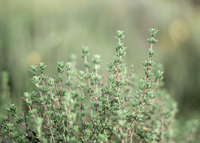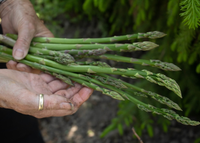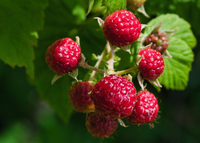If you’re someone who loves no-fuss gardening, then planting a perennial food garden is just the thing for you
We often use the words "perennials" and "annuals" for flowering plants, trees and shrubs in landscapes, but they translate to the world of food too. Perennial veggies, fruits, herbs, plus edible and medicinal flowers are those which you’ll sow/transplant once and reap the benefits for years to come.
A plant can be perennial depending on its growing zone—and yes, there are even peppers that are perennial in warmer climates. There are evergreen perennials that keep their leaves all year round, hardy perennials which may die back to the ground but regrow in spring, and tender perennials which need digging up in autumn and storing in a frost-free location to replant in spring.
Sounds too easy? That’s because it really can be! There’s minimal maintenance with maximum benefit with these garden plants. Here’s a list of some fan favourites when it comes to perennial herbs and food.
Perennial herbs Photo by Anja Junghans on Unsplash
Photo by Anja Junghans on Unsplash
- Chives: A mild onion taste to dress any plate or dip.
- Horseradish: Spicy roots and leaves, which are great for pickling.
- Lavender: A pleasant, calming flower that is used as an herb in cooking or in teas.
- Lemon Balm: Known for its benefits for anxiety and as a sleep aid, lemon balm is also a great garnish in dishes.
- Mint: A digestive aid that can also be used in cooking or in iced or hot beverages.
- Oregano: A well-loved herb commonly used in pizzas or pastas.
- Rosemary: Hard to establish in some areas, but keep it mulched and it should survive.
- Sage: A semi-perennial, as it lasts a few years before going to flower/seed.
- Thyme: Another woody herb like rosemary that is used to flavour many culinary dishes.
- Yarrow: A beautiful flowering herb which can be made into a tea to aid with menstrual cramps and general stress, or used topically to clot blood and sunburns.
Perennial vegetables Photo by Inge Poelman on Unsplash
Photo by Inge Poelman on Unsplash
- Jerusalem Artichoke: American root vegetable with a rich and nutty flavoured tuber.
- Asparagus: Pick in the spring, then three years after the plant has established.
- Rhubarb: Tart stems can be used in baking when paired with a sweet fruit (avoid leaves as they are toxic).
- Watercress: Peppery leaves and can use the seeds to dry like mustard.
- Lovage: A perennial version of celery to use in soups and stews.
- Sorrel: A lemony and tart green that can be eaten raw or cooked.
- Ginger: Perfect for tea,
- Ramps: A perennial version of leek, which can be used in cooking.
- Chicory: Bitter leaves that can be eaten raw or cooked; taproot can be baked and ground into a coffee substitute.
- Caucasian Spinach: A vining plant that can be sautéed or steamed like chard and spinach.
Perennial fruits Photo by Stan Slade on Unsplash
Photo by Stan Slade on Unsplash
- Blueberries: A tasty and sweet fruit that will bush and produce year after year.
- Raspberry: Sweet and tart, raspberries are some of the first fruits of the year.
- Strawberry: The very first (and usually the last) fruit to grace our plates each year.
- Blackberries: Produce very large berries with very little work.
- Grapes: Relatively low-maintenance and grow bigger with each passing year.
- Figs: Only a perennial in certain areas. In others, they may need to be wrapped in burlap to survive.
- Mulberries: Many grow natively but you can also plant your own. They’re a delicious immune-supporting snack.
- Peaches: This tree will take a few years to establish, but once it does, you’ll be making jams and jellies galore.
- Elderberries: The raw berries are toxic, but cooked, they are some of the most nutrient-dense berries and make a delicious (and medicinal) syrup.
- Serviceberries: Unlike most berries, these come from a tree. They’re a fun and different berry to add to your perennial garden and can be used in bread, pies, or jams as well.
Although these plants won’t last forever, they’ll last longer than our yearly sown annuals and all they’ll need is a little compost amendment to keep them growing strong year after year.



